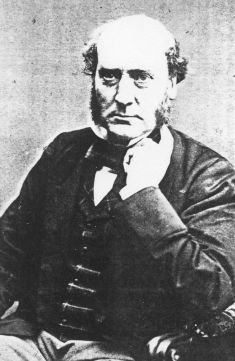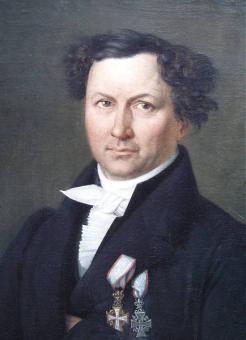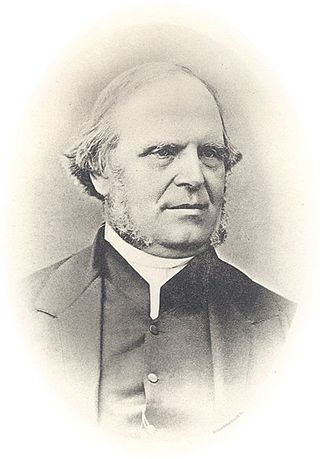
Sir George Gilbert Scott, largely known as Sir Gilbert Scott, was a prolific English Gothic Revival architect, chiefly associated with the design, building and renovation of churches and cathedrals, although he started his career as a leading designer of workhouses. Over 800 buildings were designed or altered by him.

Sir Charles Henry Darling was a British colonial governor.

North River is a town on the Avalon Peninsula of Newfoundland in the Canadian province of Newfoundland and Labrador. It was incorporated as a municipality in 1964.
James Crowdy was an English-born official in Newfoundland. He was Speaker of the House of Assembly of Newfoundland and Labrador from 1843-48.
Thomas Glen was a Scottish-born merchant and politician in Newfoundland. He represented Ferryland in the Newfoundland and Labrador House of Assembly from 1842 to 1848 and from 1855 to 1874.
The 1848 Newfoundland general election was held in 1848 to elect members of the 4th General Assembly of Newfoundland in Newfoundland Colony. The use of two separate bodies, an elected assembly and an appointed Legislative Council, was resumed; the experiment with combining the two bodies which had been initiated in 1842 was terminated. While the exact party composition of the Newfoundland House of Assembly following this election is unknown; the Liberals did enjoy a majority.
The 1842 Newfoundland general election was held in 1842 to elect members of the 3rd General Assembly of Newfoundland in Newfoundland Colony. The elected assembly with 15 members and the appointed Legislative Council with 10 members were combined into a unicameral legislature.

James Gervé Conroy was an Irish-born lawyer, judge and political figure in Newfoundland. He represented Ferryland on the Irish Shore in the Newfoundland and Labrador House of Assembly from 1874 to 1880 as an Anti-Confederated, in the second term as an anti-confederated Liberal; he helped lead the opposition to William Vallance Whiteway's administration.
Patrick J. Scott was a lawyer and political figure in Newfoundland. He represented St. John's West in the Newfoundland and Labrador House of Assembly from 1872 to 1882, from 1885 to 1889 and from 1894 to 1897.
Sir Bryan Robinson was an Irish-born lawyer, judge and politician in Newfoundland. He represented Fortune Bay in the Newfoundland and Labrador House of Assembly from 1842 to 1848.
The 1836 Newfoundland general election was held in 1836 in the Colony of Newfoundland. The results of the election were set aside by Henry John Boulton after he discovered some of the writs from the election had not been marked with the official seal. Some felt that this was a pretext used because Liberal reformers had dominated the assembly and a number who had been reelected in 1836 did not run for reelection the following year.
The 1837 Newfoundland general election was held in 1837 to elect members of the 2nd General Assembly of Newfoundland in Newfoundland Colony. The results of the previous election had been set aside by Henry John Boulton after he discovered some of the writs from the previous election had not been marked with the official seal. A number of Liberal reformers who had been elected in 1836 did not run for reelection. However, reformers continued to dominate the assembly.
John Shea was a journalist and political figure in Colony of Newfoundland. He was elected to represent Burin in the Newfoundland and Labrador House of Assembly in 1836.

Jørgen Hansen Koch was a Neoclassical Danish architect. He was chief of the national Danish building administration from 1835 and director of the Royal Danish Academy of Fine Arts from 1844 to 1849.

Patrick Fairbairn was a Scottish Free Church minister and theologian. He was Moderator of the General Assembly 1864/65.

John Henderson was a Scottish architect operational in the mid-19th century. He is chiefly remembered as a church architect, with his early work being in the Gothic revival and tractarian style, before developing his own distinct style.

The Old Church of St. Peter is a Roman Catholic church established under the authority of the Roman Catholic Archdiocese of New York in Poughkeepsie, Dutchess County, New York in 1837. It is the second oldest Catholic Church on the Hudson and is considered the Mother Church of the Hudson Valley because from it all the parishes in Ulster and Dutchess counties were founded. The church is also referred to as Our Lady of Mount Carmel since 1965 when St. Peter's parish relocated to Hyde Park, New York and the parish of Our Lady of Mount Carmel church relocated to site.
The members of the 2nd General Assembly of Newfoundland were elected in the Newfoundland general election held in May 1837. The general assembly sat from July 3, 1837 to 1841.
Robert Oke, H.M. was the first chief inspector for the Newfoundland Lighthouse Service and served from at least 1848 to 1870. Oke installed the first light mechanism at the Cape Bonavista Light in 1842, and installed the famous Isle of May light mechanism at the Cape Pine Light in 1850, which was later moved to Harbour Grace Island and finally to Cape Bonavista, where it can be viewed today.







